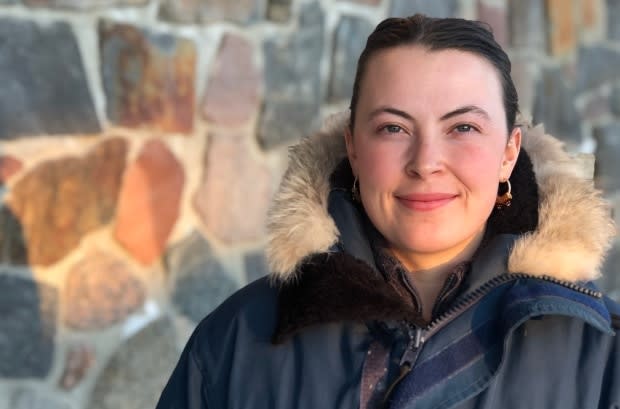Indigenous leaders 'losing faith' in environmental protection amid oilsands monitoring budget cuts
Indigenous leaders in the Northwest Territories and northern Alberta are "angry" about a reported joint decision by the federal government and Alberta to cut the budget for environmental monitoring in the oilsands.
The comments come after the Canadian Press reported that Alberta and the federal government signed a deal to reduce the budget for fieldwork on the main branch of the Athabasca River by roughly 25 per cent, to $44 million, in 2020, down from $58 million in 2019.
Gerry Cheezie, the chief of Smith's Landing First Nation on the N.W.T.-Alberta border, said he is "dismayed" with how various levels of government are dealing with the environmental impacts of the oilsands.
The Slave River runs downstream from oilsands projects in Fort McMurray, Alta., through Smith's Landing traditional territory in northern Alberta, all the way to Great Slave Lake in the Northwest Territories.
"I am so angry at this because it's something we've been talking about for a long time with different governments and with industry," Cheezie said. "I'm losing faith in the ability of governments to protect our people."
Something's got to be done. - Cameron MacDonald, Fort Chipewyan Métis president
The decision allegedly cancels field studies on wetlands, fish, insects and a pilot project to gauge the risks of tailings ponds for nearby water systems.
Water quality assessment for Wood Buffalo National Park is also ending, according to the Canadian Press report.
Minister clarifies budget cuts
When asked about the smaller budget for environmental monitoring of the oilsands on Edmonton A.M. on Wednesday, Jonathan Wilkinson, Canada's environment and climate change minister, said "there was no decision to cut anything," and that the budget cuts are a result of a shortened research season due to COVID-19.
"There will be a bit less spending this year on some of the monitoring activities but it's simply a function of the fact that, for a third of the season, we couldn't send people out into the field," Wilkinson said.
An oilsands oversight committee evaluated which projects could continue this year during the pandemic by looking at the budget, Wilkinson said. The committee has 12 members, including six Indigenous members, two representatives from the government of Alberta and one from the federal government.
Laboratories that did water quality testing also had to close down at the beginning of the pandemic, Wilkinson said, so some activities could not be performed. Some monitoring activities are now "ramping back up," he said, and the "vast majority" of projects will continue.

"It's important for all Canadians to know that we're managing resources in a responsible way and ensuring that pollution is not happening," Wilkinson said.
Wilkinson said the funding for environmental monitoring projects will go back to normal in 2021.
The Alberta government did not immediately respond to a CBC request for comment.
Some regulations, programs suspended
In June, the Alberta government received backlash after its provincial regulator postponed hundreds of environmental regulations. The Alberta Energy Regulator called it "temporary relief" for energy industry members that were not able to comply with the public health order during the COVID-19 pandemic.
The regulator put back in place all environmental monitoring standards on July 15.
The N.W.T.'s Department of Environment told CBC in a statement that they continue to "make its concerns known" to both the federal and Alberta governments about the suspension of water quality monitoring projects. The territory is also asking both governments to consult them on any changes going forward.
Alberta resumed long-term water monitoring in the N.W.T. in June, the department continued. Federal government programs remain suspended.
The N.W.T. has also asked for a spot on the committee that oversees the Oil Sands Monitoring Program, which is jointly managed by Alberta and the federal government. The federal government suspended the Oil Sands Monitoring Program and other monitoring programs at the beginning of the pandemic.
The N.W.T. has not noticed any notable changes to water quality during its monitoring exercises along the Slave River between March and June.
'Oilsands pollution is killing our people'
The traditional territory of Smith's Landing First Nation is full of wetlands that used to teem with fish, frogs and other types of wildlife that band members relied on.
Now, Cheezie said his members find deformed fish with soft, oily skin in their waters — a direct result of oilsands pollution.

"We rely on [wildlife] for food, for medicines, for spiritual sustenance," he said. "Slowly but surely, the oilsands pollution is killing our people."
Zoe Guile, conservation co-ordinator with Canadian Parks and Wilderness Society Northwest Territories Chapter, said the cuts to studies into the health of fish and other aquatic life could have serious impacts for people like Cheezie and others who rely on those waters.
"If these insects and animals living in this water are ... experiencing health issues, then that's just a really big red flag that that water isn't safe for people anymore," Guile said.
Environmental monitoring identifies crises in the early stages, making it easier for scientists to mitigate any damages that might happen, she said. Consistent data collection also helps researchers figure out when certain environmental changes started to happen.
Cameron MacDonald, president of the Fort Chipewyan Métis, told CBC it might be a good idea to host a meeting with Indigenous groups in northern Alberta and N.W.T. to figure out how to best lobby the government as a collective voice.
"Something's got to be done, because it's our air, it's our water that's being affected," he said.


